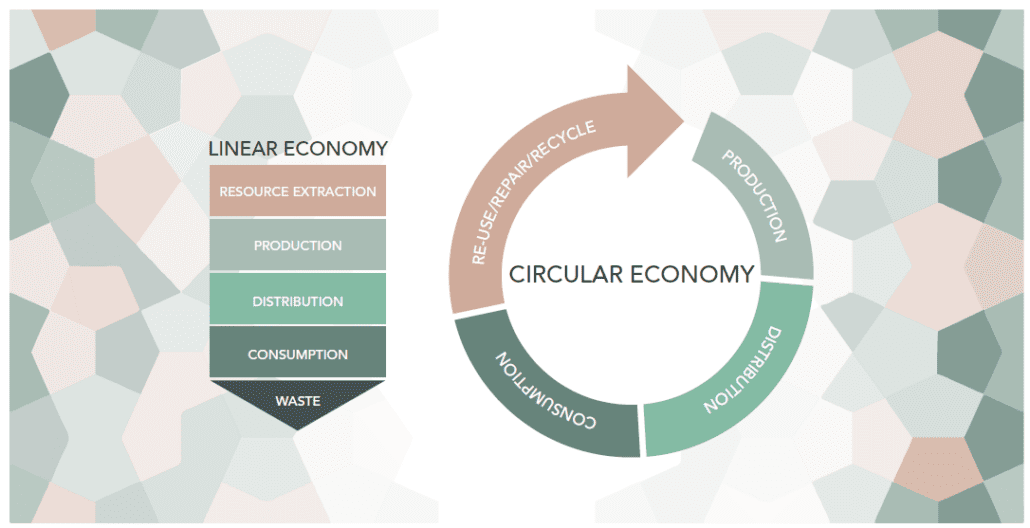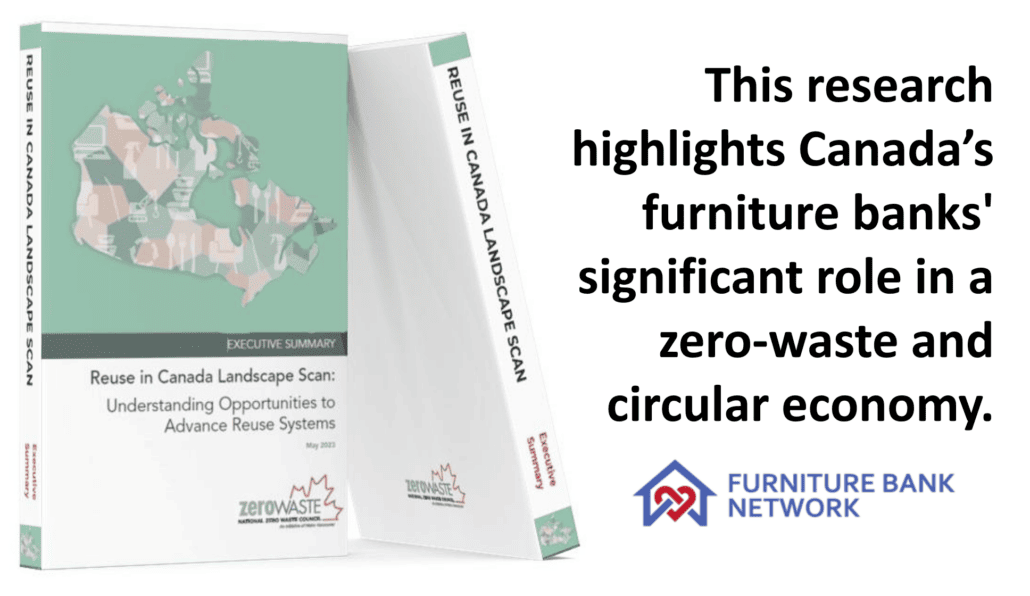Reuse in Canada Landscape Scan:
Executive Summary
As sustainability experts, we understand the importance of reducing waste and promoting circular economy principles. We also need to ensure that our corporate policies are benefiting the communities in which we operate. Here, we look at furniture reuse practices in Canada, based on a recent case study from the National Zero Waste Council.
The Reuse in Canada Landscape Scan report, commissioned by the National Zero Waste Council, provides valuable insights into the current landscape of reuse systems in Canada. This comprehensive study aimed to identify opportunities and gaps in various sectors and advance the development of reuse systems across the country.
Scope of the Study:
The study conducted by the National Zero Waste Council involved an extensive examination of reuse systems in Canada. It encompassed six key sectors: Food Packaging, Personal Care Packaging, Textiles (Apparel and Carpet), Construction, Electronics, and Household Goods. The report analyzed the current situation in each sector, explored relevant policies and regulations, examined initiatives in other jurisdictions, and identified barriers to advancing reuse systems.
Goals of the Study:
The primary goal of the study was to contribute to the expansion of reuse systems in Canada. The National Zero Waste Council aimed to provide a comprehensive understanding of the opportunities, challenges, and potential strategies for advancing reuse in various sectors. By examining existing reuse models and identifying sector-specific barriers, the study aimed to generate actionable insights that could drive policy changes, foster collaboration, and inspire innovative solutions.
Outcomes of the Study:
The Reuse in Canada Landscape Scan report yielded several key outcomes that shed light on the potential of reuse systems and their impact on waste reduction and sustainability.
- Sector-Specific Opportunities:
- Barriers and Challenges:
- Policy Recommendations:
- Collaboration and Partnerships
Barriers to Overcome:
Expanding reuse systems is not without its challenges. The report identifies general barriers that affect participants across sectors, including governments, manufacturers, retailers, and consumers. Additionally, sector-specific barriers pose unique obstacles to the growth of reuse business models. Understanding these challenges is crucial to finding effective solutions.
Overall, the National Zero Waste Council’s study on reuse systems in Canada provides a comprehensive overview of the current landscape, identifies growth opportunities, and offers actionable recommendations to advance reuse in various sectors.

Why does this research matter?
This groundbreaking research highlights the significant role of Canada’s furniture banks in the zero waste and circular economy system. It emphasizes the unique social, environmental, and economic benefits of furniture banks as a preferred model of reuse. The findings serve as a foundation for future research and expansion of the furniture bank concept, showcasing its exceptional contributions to sustainable development in Canada.
The research conducted by the National Zero Waste Council provides an in-depth analysis of furniture reuse and its impact on sustainability. It shines a light on the unique social, environmental, and economic benefits of Canada’s furniture banks as a preferred model of reuse. We must use this groundbreaking study to expand reporting and tracking of home goods and furniture reuse in Canada’s furniture banks for future generations to enjoy. By doing so, we can build a more sustainable world that is better prepared to tackle global waste challenges head-on. With these insights at our disposal, let us take action now.
The Impact of Reuse: Social Impact in a Community
(Excerpt from Furniture Bank’s 2022 Impact Report)
Looking at Furniture Bank’s own impact measurement approach, which aligns with the Social Return on Investment (SROI) framework and the Common Approach to Impact Measurement, allows us to quantify the value we create in the lives of those we serve. By providing gently reused furniture to individuals and families in need, we’re not only improving their quality of life but also reducing waste and promoting sustainability.
What sets Furniture Bank apart is our commitment to transparency and accountability. Our impact measurement practices ensure that every donation makes a meaningful difference, and we’re proud to share that for every dollar invested, we generate significant social, environmental, and economic value. This approach allows us to be effective stewards of our donors’ generosity and maximize the impact of our donors’ support.
Furniture Donations: Building comfort and hope
Through the generosity of donors in the Greater Toronto Area, Furniture Bank was able to collect and redistribute a significant volume of furniture to those in need. Over the past three years, Furniture Bank received donations from 14,455 households, amounting to a total of 141,688 furniture items. These donations have been instrumental in our efforts to furnish homes and provide comfort to families.
Delivering impact: Supporting families in need
Our work is centered around delivering essential furniture to individuals and families in need. In the past three years, Furniture Bank successfully delivered furniture to 2,269 beneficiary households, positively impacting the lives of 15,043 individuals. These deliveries have transformed empty spaces into nurturing homes, providing stability and security to families emerging from crisis.
Environmental stewardship: Diverting furniture from landfills
Our commitment to sustainability is reflected in our efforts to divert furniture from landfills. Over the past three years, Furniture Bank diverted a remarkable 65,865 cubic metres (m3) of furniture from landfills, abating 14,365.77 metric tonnes of carbon. This achievement underscores our dedication to responsible consumption and environmental protection.
Responding to need: Appointment requests and beneficiary households
Furniture Bank received a total of 9,876 appointment requests for assistance over the past three years, highlighting the pressing need for our services. While Furniture Bank has been able to assist 7,149 beneficiary households, we remain dedicated to expanding our reach and meeting the needs of more families in the future.






